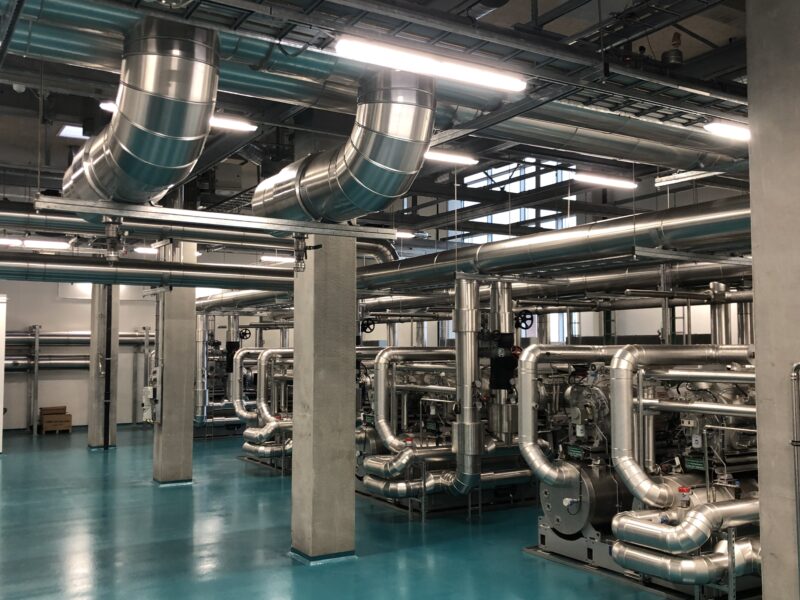Solution provider

Frederiksberg Forsyning is the local utility company in Frederiksberg.
Case
District energy
District heating
Drinking water treatment


Frederiksberg Forsyning is the local utility company in Frederiksberg.
Add the case to your visit request and let us know that you are interested in visiting Denmark
As cities work to reduce dependency on fossil fuels, expanding local, renewable sources of district heating has become a priority. On Frederiksberg, traditional district heating is predominantly produced by combined heat and power (CHP) plants using biofuels, with occasional reliance on fossil fuels during peak demand. To enhance energy efficiency and reduce emissions, Frederiksberg Forsyning saw an opportunity to tap into an underused local resource: the heat embedded in drinking water.
Frederiksberg Forsyning has implemented an innovative heat pump system that extracts thermal energy from drinking water and transfers it directly to the district heating network, supplying locally sourced heating to Frederiksberg residents. The system, connected to the city’s waterworks, cools the drinking water by 4–7 degrees Celsius during the extraction process, capturing energy that would otherwise go to waste. This heat pump plant contributes approximately 3% of the city’s total district heating demand, marking a step toward a more sustainable heating supply.
The heat pump facility consists of four pumps with a combined capacity of 6.5 MW, powered by electricity increasingly sourced from renewable energy. In 2023, 63% of Denmark’s electricity was generated from wind and solar, which further reduces the environmental footprint of the district heating system. By leveraging this local energy source, Frederiksberg Forsyning decreases its reliance on imported biofuels and fossil fuels, reducing emissions and enhancing energy self-sufficiency.
The integration of large-scale heat pumps into Frederiksberg’s district heating network offers multiple benefits:
This local heat source is one part of a broader strategy to make district heating greener by utilizing various renewable sources. Beyond drinking water, other potential sources, such as wastewater, air, or seawater, could further expand sustainable heating options in the future, showcasing the versatility and potential of heat pump technology in supporting the green transition.